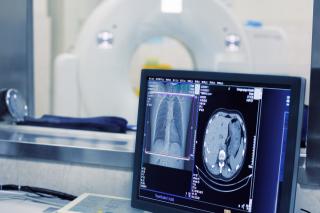A strategy proposing collaborative imaging networks across England says it will "deliver better quality care and better value services for patients and provide hardworking NHS staff opportunities to develop their career and increase their productivity."
Published by NHS England and NHS Improvement, the document "proposes a geographical footprint based on patient flows for a range of conditions including cancer, stroke, major trauma, acute cardiology, and maternity services."
The plan is to create 18 networks by 2023.
Richard Evans, the SCoR's chief executive officer, said, "We welcome this plan. It has interesting features and potentially could have very positive benefits for patients."
Regarding workforce shortages which can have a significant impact on new initiatives, Richard said, "There are benefits that could improve staff recruitment and retention such as support and flexibility for personal development, flexible working and retirement opportunities, high quality learning and training, and sharing staff resources between networks.
"It is encouraging to see that the document does acknowledge that there needs to be a significant increase in the numbers of radiographers and radiologists in training ."
Other anticipated benefits of the imaging networks are:
- Economies of scale when procuring equipment
- Equal access for patients, regardless of where they live
- Distributed reporting, which allows access to sub-specialty opinion irrespective of location
- Shared capacity and management of imaging reporting backlogs to optimise reporting turnaround times
- A cohesive approach to quality improvement
Networks in the NHS are not new and part of the strategy's development has been to look at what works well in other collaborative imaging networks in paediatrics, interventional and neuroradiology.
A key driver of the plan is that the NHS now spends £2billion a year on imaging services (not including independent providers commissioned by the NHS) and as demand grows, the cost will continue to rise.
Transforming imaging services in England: a national strategy for imaging networks

